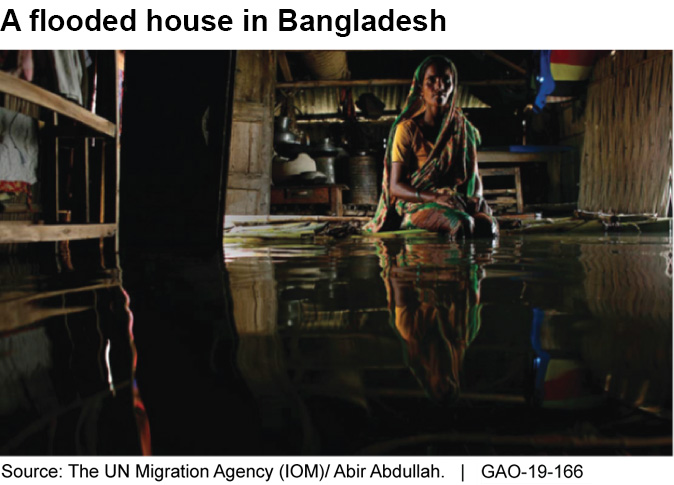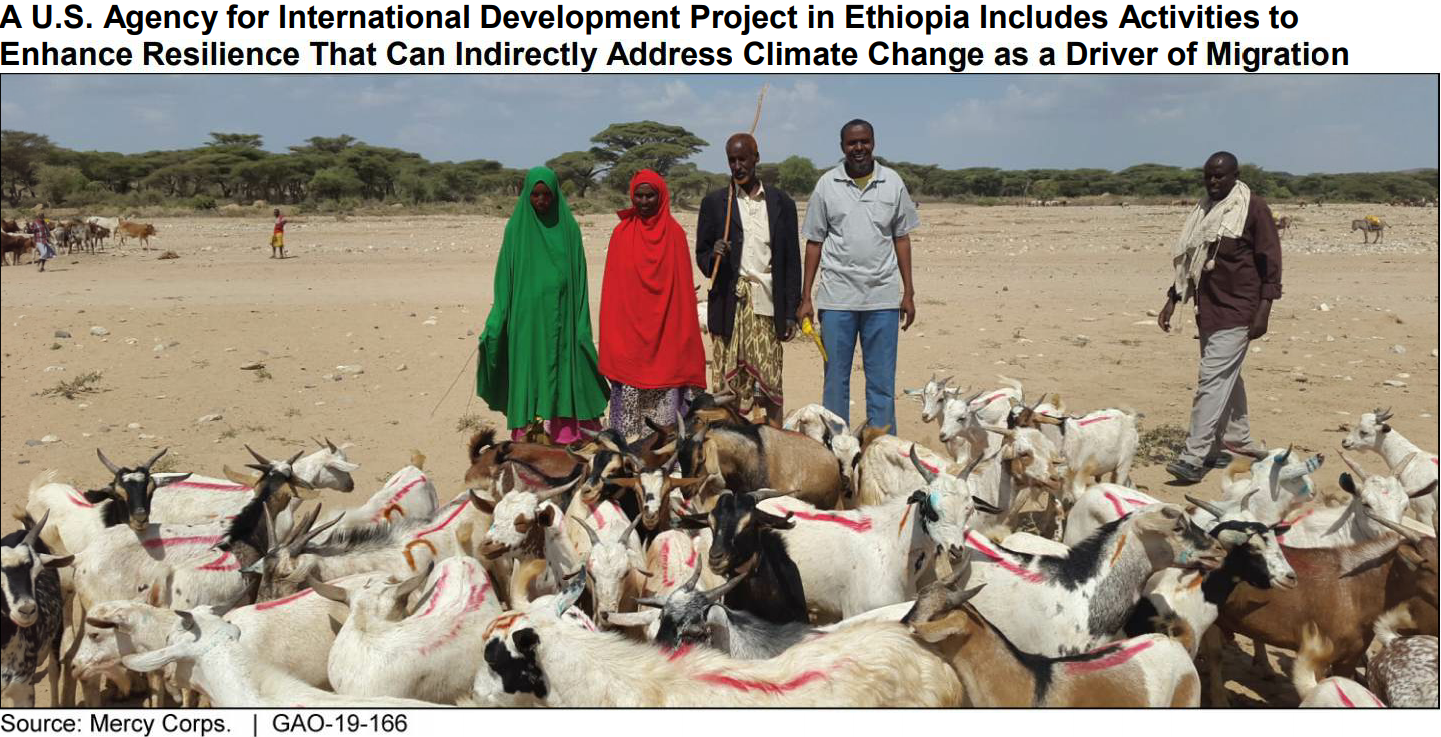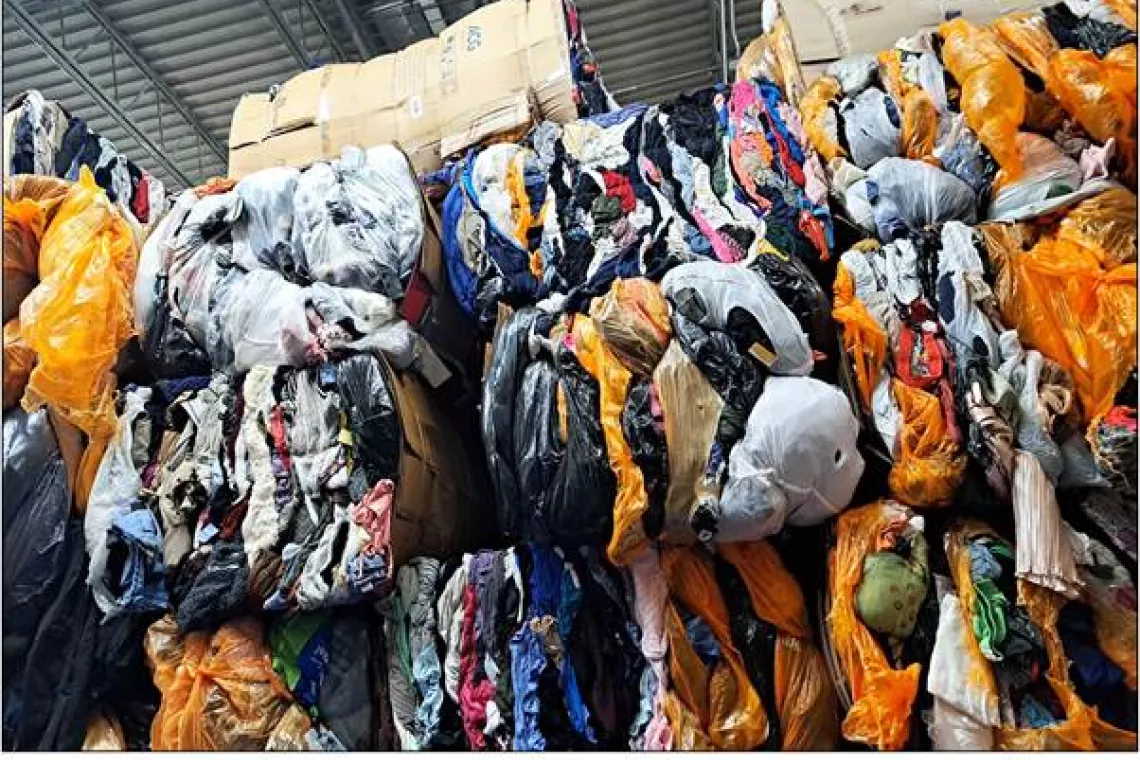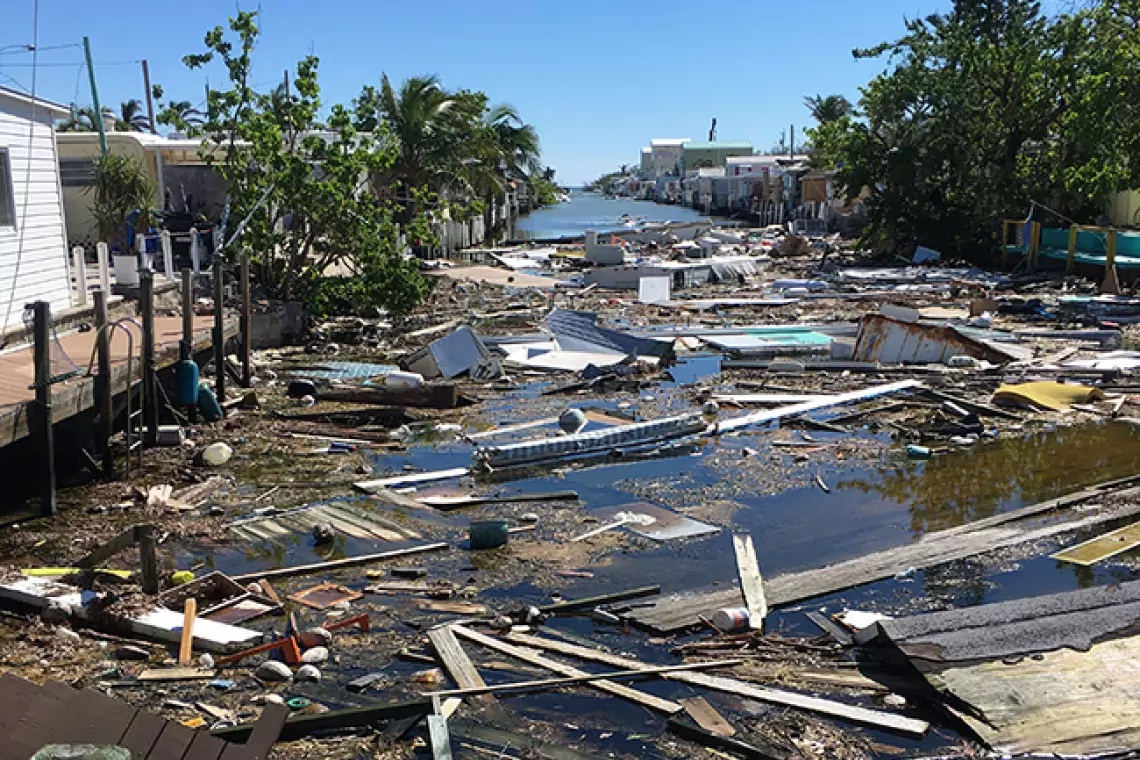Climate Change, Global Migration, and U.S. Government Actions
Today is World Environment Day—a day for learning more about key issues facing the environment, such as climate change, and for thinking about how people interact with the Earth.
In today’s WatchBlog, we discuss our recent report on the potential effects of climate change on global human migration and what some federal agencies are doing about these issues.
How could climate change affect migration?
Climate change may intensify disasters that affect people’s lives such as drought, crop failure, sea level rise, and extreme weather events, according to international and U.S. government sources.
The effects of climate change, in turn, may alter existing migration trends around the world, according to the International Organization for Migration. For example, following a natural disaster such as a hurricane or flood, people may be forced to migrate because their homes are damaged or destroyed.
A complicated choice
Deciding whether to move away from one’s community is complicated in any situation—people must weigh many factors, such as economic opportunities, political stability, personal motives, and demographic pressures.
The effects of climate change add another layer of complexity to this decision. However, there is debate about how directly climate change influences people’s decisions to migrate or stay. For instance, it’s difficult to determine whether climate change is one of the many factors directly affecting people’s decision to migrate or whether it indirectly amplifies those factors.
Are federal agencies addressing climate change as a driver of migration?
We found that the U.S. Agency for International Development, the State Department, and the Department of Defense have activities related to climate change. Although none of these activities specifically focused on the nexus of climate change and migration, they could indirectly address some factors that drive migration. For example, USAID’s efforts to enhance countries’ resilience to the effects of climate change could indirectly address some factors that drive migration.
We also found that the 3 agencies have discussed the link between climate change and migration in agency plans and risk assessments, but the issue hasn’t been a focus of any of these efforts.
For example, State identified migration as a risk in one of its country-level climate change risk assessments in early 2017. However, State subsequently changed its approach and no longer provides clear guidance to its staff on how to assess climate change risks. We recommended that State provide its staff with this guidance.
To learn more, check out our report.
Comments on GAO’s WatchBlog? Contact blog@gao.gov.
GAO Contacts
Related Products

GAO's mission is to provide Congress with fact-based, nonpartisan information that can help improve federal government performance and ensure accountability for the benefit of the American people. GAO launched its WatchBlog in January, 2014, as part of its continuing effort to reach its audiences—Congress and the American people—where they are currently looking for information.
The blog format allows GAO to provide a little more context about its work than it can offer on its other social media platforms. Posts will tie GAO work to current events and the news; show how GAO’s work is affecting agencies or legislation; highlight reports, testimonies, and issue areas where GAO does work; and provide information about GAO itself, among other things.
Please send any feedback on GAO's WatchBlog to blog@gao.gov.






